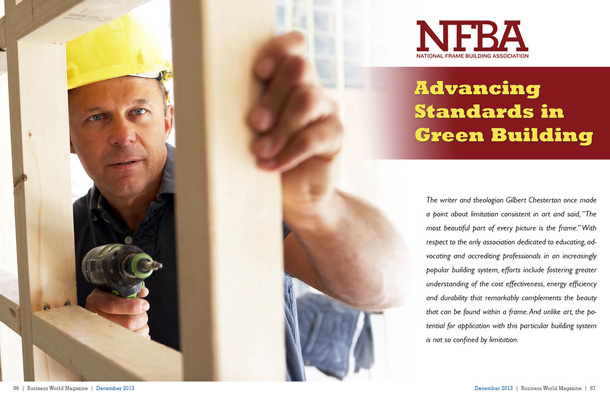

The Australian Geothermal Energy Association (AGEA) was formed in November, 2007, but as Chief Executive Susan Jeanes will tell you, geothermal energy itself is “hardly new”. From hot springs, geothermal energy has been utilized for heating since ancient Roman times, and for bathing purposes even earlier. Earth’s oldest geothermal district heating system in France has been in operation since the 14th century. New Zealand’s been taking advantage of it since 1958, and in Iceland geothermal energy accounts for over 50 per cent of the total natural consumption of primary energy – they use it for everything from heating houses, generating electricity, to heating pavements during winter to prevent the accumulation of snow.
But even though geothermal energy isn’t new, it’s still not widely understood, and thus not widely demanded – and that’s a problem for AGEA. “Over the longer term, geothermal energy will be one of the most desirable – if not the most desirable – energy source,” says Susan. AGEA exists to promote information about the geothermal industry and its capabilities – to get that message out there.
The Association
AGEA began with the Commonwealth – and the South Australian government in particular – bringing the geothermal industry together through a series of workshops. As a result of these efforts, the companies involved got together and decided they needed a representative body. “Really, it was the efforts of government on both the federal and South Australian level to talk to the industry, to pull them together.” In many ways, AGEA makes the government’s job much easier by presenting them with a unified voice of the industry. Through AGEA, the government is kept informed of industry challenges and ways in which the government can contribute.
As an industry body, AGEA works very closely with the government, with whom they have their frustrations – particularly in regards to the carbon pricing regime – but who they are on mostly good terms with. “Most Australian governments are fairly supportive,” Susan says. “They like the idea of geothermal energy. What they haven’t worked out yet – and this is our ongoing concern – is how does the government support the geothermal industry in a way that’s useful? That’s the ongoing conversation we’re having at the moment.”
Before joining AGEA, Susan was running the Renewable Energy Generators of Australia, the only national renewable energy body at the time. Through her work there, she became interested in geothermal energy, and when AGEA formed she knew she wanted to be involved. She didn’t like what she saw in the future of energy generation in Australia, and thought geothermal energy was the best remedy available. “We didn’t have the solutions in Australia,” she explains. “We didn’t have anything that could take over from coal. I hold the view that with the progress the geothermal industry is making, that it stands the best chance of filling that gap.” Geothermal, clean coal, and solar energy are the future of the Australian energy market, she says, and that’s where she wanted to be.
Today AGEA has 26 members, including all active geothermal companies, as well as companies that provide services to the geothermal industry. They also count a few universities in the research sectors as members. “Anybody who is active in the geothermal industry in Australia is a member of ours,” Susan says.
Hot rocks
Geothermal energy itself is hardly new, but the same can’t be said for renewable energy derived from ‘hot rocks’. Like volcanic and sedimentary geothermal resources, hot rocks make use of naturally occurring heat to produce power. The difference is that volcanic and sedimentary resources usually have natural occurring reservoirs, which allow water to flow into wells and bring hot fluids to the surface. With hot rocks, developers have to artificially create this reservoir, allowing for water to flow through on deep hot granite rocks. This reservoir is created through a process known as hydraulic stimulation. In Australia, suitable sites are located in South Australia and Queensland.
“Australia is certainly one of the pioneers of that,” Susan says. “It’s going to be a game changer globally.” And because Australia is in a good position to capitalize on that technology -AGEA already has three member companies with “Hot Rocks” in their names – it can cover a substantial portion of Australia’s energy needs in the future.
Challenges
One of AGEA’s key goals is resolving the carbon pricing issue. Susan says the government has thus far been unable to come up with a resolution for their carbon pricing regime, but are now pretty close. “That’ll make a big difference to the way investors in energy projects see other opportunities apart from coal,” Susan says. Investment in energy generation has “stagnated”, according to Susan, because of the uncertainty currently surrounding carbon pricing.
Another challenge facing AGEA is communication with Australia’s traditional energy sector, primarily the coal industry. According to Susan, most coal producers are funding some efforts to improve the performance of coal with clean coal initiatives and R&D funds, but are not interested in talking about alternative technologies. “For us that’s a real problem,” Susan says. “We think there’s a wonderful opportunity to transition to cleaner energy for the coal industry, partly by talking to us.” One example she gives is one the University of Newcastle is looking at – the use of geothermal energy to preheat boilers, which usually require the burning of coal. Such an initiative would reduce carbon emissions, but like Susan says, the relationship between the coal industry and the coal fire generators is “an historic one”.
The future
Geothermal energy will only become more prominent in Australia, although maybe not at the rate AGEA would like. “We did some work a couple years ago to suggest we could build 2,200 megawatts of geothermal capacity by 2020. I think there would be a concern in the industry now that that would be an optimistic figure,” Susan says. “There’s been too much of an obsession on getting the carbon price right and not enough on technology development and the sort of things that you need to do to have your technologies ready. I think our industry would be reasonably united on that view.”
Going forward, however, she thinks that once people understand the geothermal industry there will be more interest in their projects. After all, a Federal Government analysis says that that geothermal energy will be the cheapest form of generation technology in the market by 2030. She thinks people will feel more comfortable when they see their projects operating and gathering that low cost energy.







